People often think of productivity on an individual scale: how can I be more productive? But most of us work for organizations, and if the organization isn’t productive, then you can’t be productive either.
Can there really be a magic bullet that can pierce through the complexities of collaboration and get everyone working together? Operational excellence is such a technique. If you’re tired of waiting for colleagues on assignments and dealing with overbearing red tape, then operational excellence can assist you.
What Is Operational Excellence?
Operational excellence is achieved when an organization executes its business operations better than its competitors in terms of costs, production output, quality assurance, customer satisfaction and profitability. By choosing an operational excellence strategy, companies attempt to outperform their competitors by executing their business processes more efficiently which helps them save costs and be more profitable. This creates value for the customer and shareholder alike.
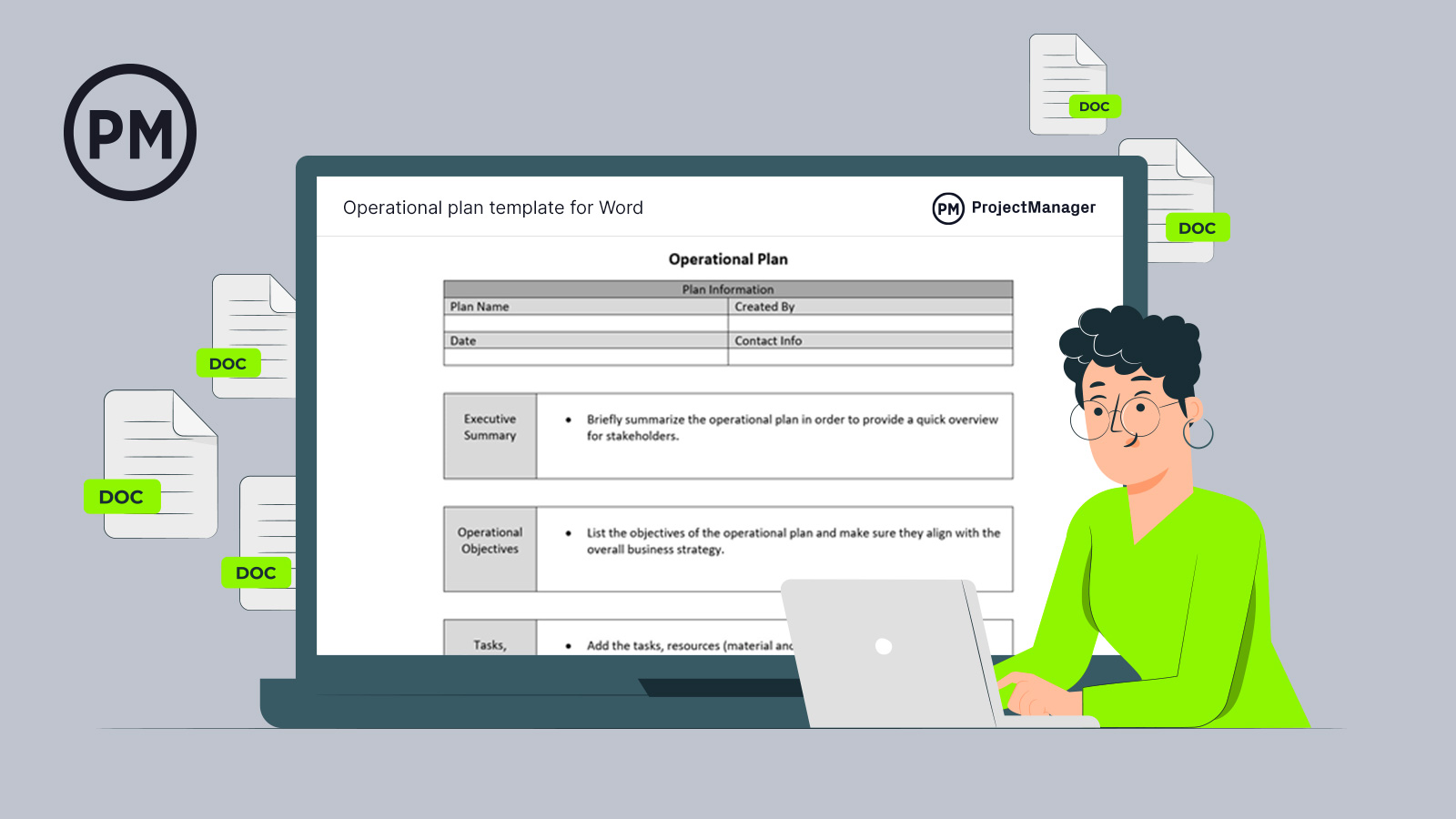
Get your free
Operational Plan Template
Use this free Operational Plan Template for Word to manage your projects better.
The truth is, no matter how productive you are, there can be external obstacles blocking your path forward. If you’re looking to become more productive, then you must use work management tools and methods that help every aspect of your organization achieve that goal.
ProjectManager has planning, budgeting, scheduling and resource management tools to help you achieve operational excellence for your business. Choose between Gantt charts, kanban boards, workload charts and real-time dashboards to get your team working more efficiently. Get started today for free.
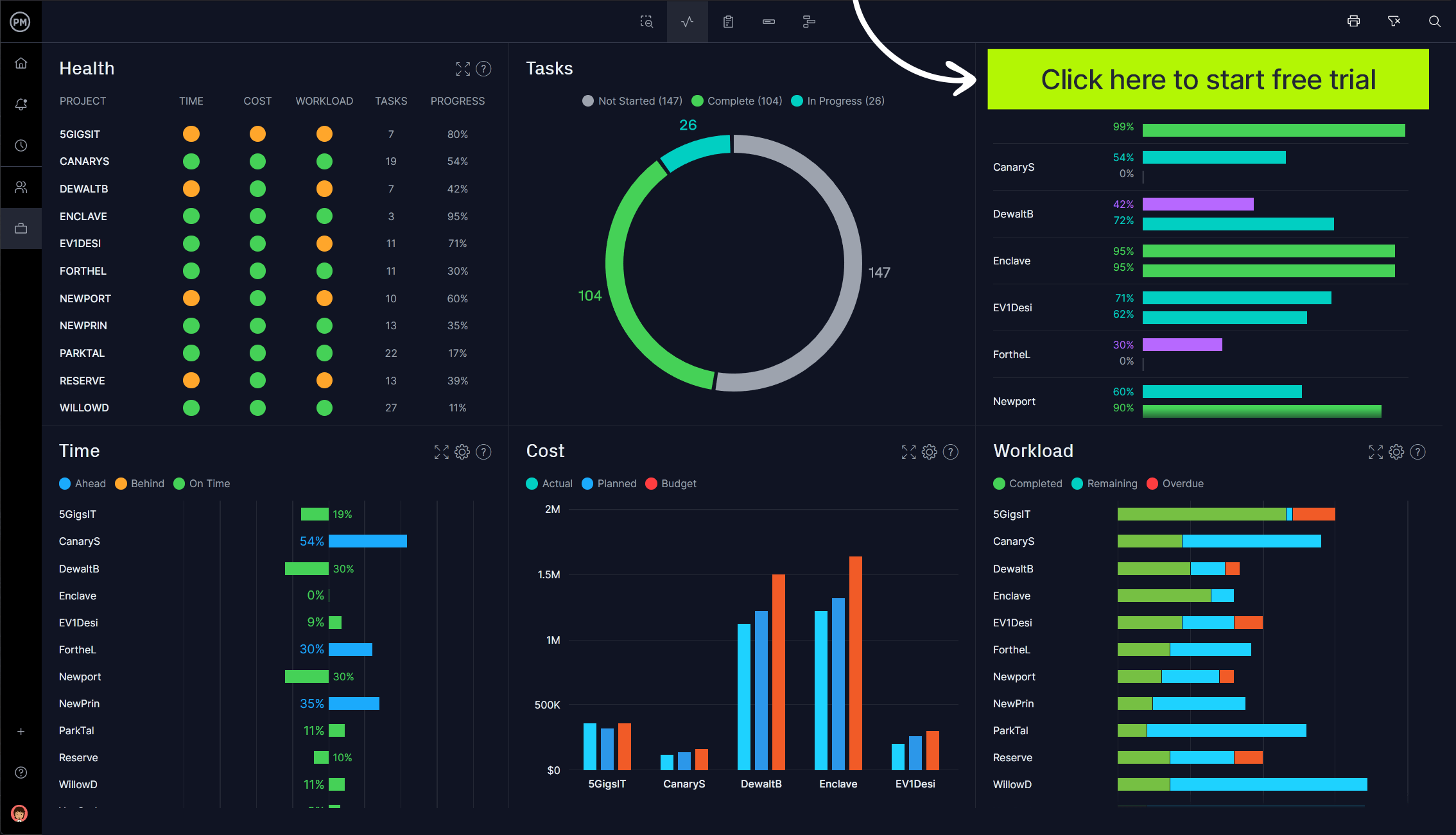
Creating an Operational Excellence Strategy
To make sure an organization can effectively adopt an operational excellence model, it must be actionable and measurable. But operational planning alone doesn’t guarantee success. Your strategy should be consistent and have reliable execution. Also, operational excellence is systemic. It must positively influence all aspects of a business, including revenue, cost and risk. It doesn’t focus on one particular aspect but lifts all to the same standard.
Of course, for operational excellence to be successful, it must complement your business strategy. In a sense, the two—operational excellence and business strategy—are the formula to achieve strong performance in the marketplace. Without one or the other, a business will struggle with weak performance.
Here are some key business areas you should monitor when creating an operational excellence framework.
- Business process management: A business process can be simply defined as any activity that your organization needs to execute to achieve goals. Therefore, your business is a sum of many business processes. By mapping them, you can find opportunities for improvement and get closer to operational excellence.
- Customer service: Customers are the most important aspect of any business, so understanding your customers’ wants and needs is the underpinning for your operational excellence strategy.
- Distribution channels: Choosing the best way to sell your products or services is an essential part of your operations. From an operational excellence standpoint, you should choose the distribution channels that let you get to your customers in the fastest, most cost-effective manner.
- Supply chain & logistics: Sourcing your raw materials, parts and components is another key aspect of operations management. It’s also important to optimize your transportation methods so that your supply chain and logistics management are streamlined.
- Stakeholder management: Every organization has different types of stakeholders such as employees, customers and communities. To achieve operational excellence, you’ll need to ensure your business stakeholders are satisfied.
Operational Excellence Principles
There is an award given to organizations worldwide for outstanding operational excellence called the Shingo Prize. It started in 1988 and is presented by the Shingo Institute at Utah State University. It judges winners by how well they adhere to these 10 key principles:
- Respect every individual
- Lead with humility
- Seek perfection
- Assure quality at the source
- Flow and pull value
- Embrace scientific thinking
- Focus on process
- Think systemically
- Create constancy of purpose
- Create value for the customer
Operational Excellence Methodologies
There are many different ways to execute operational excellence, but there are a few that have been codified and are regularly adopted across the globe. Let’s explore a few.
Lean Manufacturing
Lean is a project management methodology that focuses on adding value to customers. This is done by using a technique called value stream mapping, which helps manufacturers determine which product features add value to the customers.
Once they’ve determined what’s important for their customers from a production planning standpoint, they can remove other unnecessary steps from the production line to save costs and reduce lead time. Those unnecessary steps in the manufacturing process are known as “waste.”
Lean manufacturing also uses the “kaizen principle” of continuous improvement, which involves a cycle of permanent feedback and improvement of any aspect of the manufacturing cycle, so that companies are always moving towards operational excellence.
Six Sigma
Six sigma is a method that allows organizations to improve their operational efficiency by using the DMAIC process, which stands for define, measure, analyze, improve and control. Is a systematic method that helps resolve operational problems of any kind. Like lean, six sigma also uses value stream mapping and kaizen as a way to add value to the customer.
Another important aspect of this methodology is the Six Sigma 5S’s which stand for sort, set in order, shine, standardize and sustain, which helps organizations improve their business processes.
FLEX or PBED Method
There’s also the flawless execution (FLEX) methodology, also known as PBED, for the plan, briefing, execution and debriefing, which is based on what fighter pilots use in combat. The methodology moved to the private sector in 1998 and has roots in the agile manifesto created by software developers.
It’s an iterative process that values adapting business strategy to changing influences in the real world. That is done through a practice called debriefing, which is a tool that organizations can use to drive cultural change. It offers a voice to all employees, which then can be heard throughout the whole organization. This begins with establishing a long-term strategy that’s focused on a common goal, which is the “plan” part of PBED. It must set a clear, measurable and achievable goal. Be sure to identify any risks and the resources needed to avoid them. For help, use lessons learned from debriefing after tasks, and develop objectives for team members that align with the overall goals.
In terms of the other parts of the PBED acronym, the “brief” refers to how the plan is communicated to the teams that must execute it. “Execute” is acting on the plan and focusing on its objects while remaining flexible to cultural change. Finally, “debrief” is when the team looks at the daily execution and measures that against the plan. Any difference is analyzed and then changes are applied.
Operational Excellence Example
There’s no single method to achieve operational excellence, so you should explore different techniques. Keep in mind that not all companies are the same so it’s important that you find the tools that work best for your organization.
Okapi Method
Iris Tsidon, co-founder and CEO of Okapi, a platform for improving organizational management, and Maya Gal, CTO of Okapi, created the Okapi method, which incorporates SMART key performance indicators (KPIs). Okapi is named after a unique mammal that has the features of a giraffe, dear and zebra.
SMART is an acronym for specific, measurable, achievable, relevant and timely. Applying this technique helps to by having more precise KPIs, which are measured by actions, not behaviors. They’re challenging but attainable, relevant to the organization’s objective and scheduled within a defined timeline.
The Okapi method notes several major challenges for any organization in achieving operational excellence.
- Okapi struggles when people are disconnected from the larger business needs of the company.
- A lack of progress can stymie Okapi. This is when tasks necessary for the growth of the business are stalled. People are devoted and hard-working, but the priority of tasks assigned is poorly structured.
- If a company is unable to change to stay competitive and adapt management infrastructure to adapt and thrive in these changing environments, the company isn’t staying competitive. A process of change must be applied quickly and efficiently for Okapi to thrive.
- When data is too complicated, then understanding what that data means can become an issue. Within Okapi, reports must be timely, add value and be easy to digest, so they can be effectively acted on.
Finally, without a coherent action plan, all operational excellence efforts are doomed to fail. If people in the organization aren’t using the management system, or don’t bother to set it up and follow a plan to use it, the ability to achieve operational excellence is severely compromised. While facilitating transactions, leading business development and solving immediate problems are important, managers must delegate responsibility.
Operations Plan Template
This operational planning template helps you describe the key factors that have an impact in the operations of your organization such as your operational goals, available resources, operating budget and key performance indicators.

ProjectManager Helps You Achieve Operational Excellence
ProjectManager is a project management software that lets you plan, manage and track projects for your organization. It’s equipped with task management, resource scheduling and cost tracking tools so you can streamline your business processes, cut down costs and achieve operational excellence.
Multiple Task Management Tools
Choose between online Gantt charts, kanban boards, task lists, calendars and much more to assign tasks to your team members. With ProjectManager, you can create work schedules in minutes, by simply dragging and dropping tasks on our multiple project views.
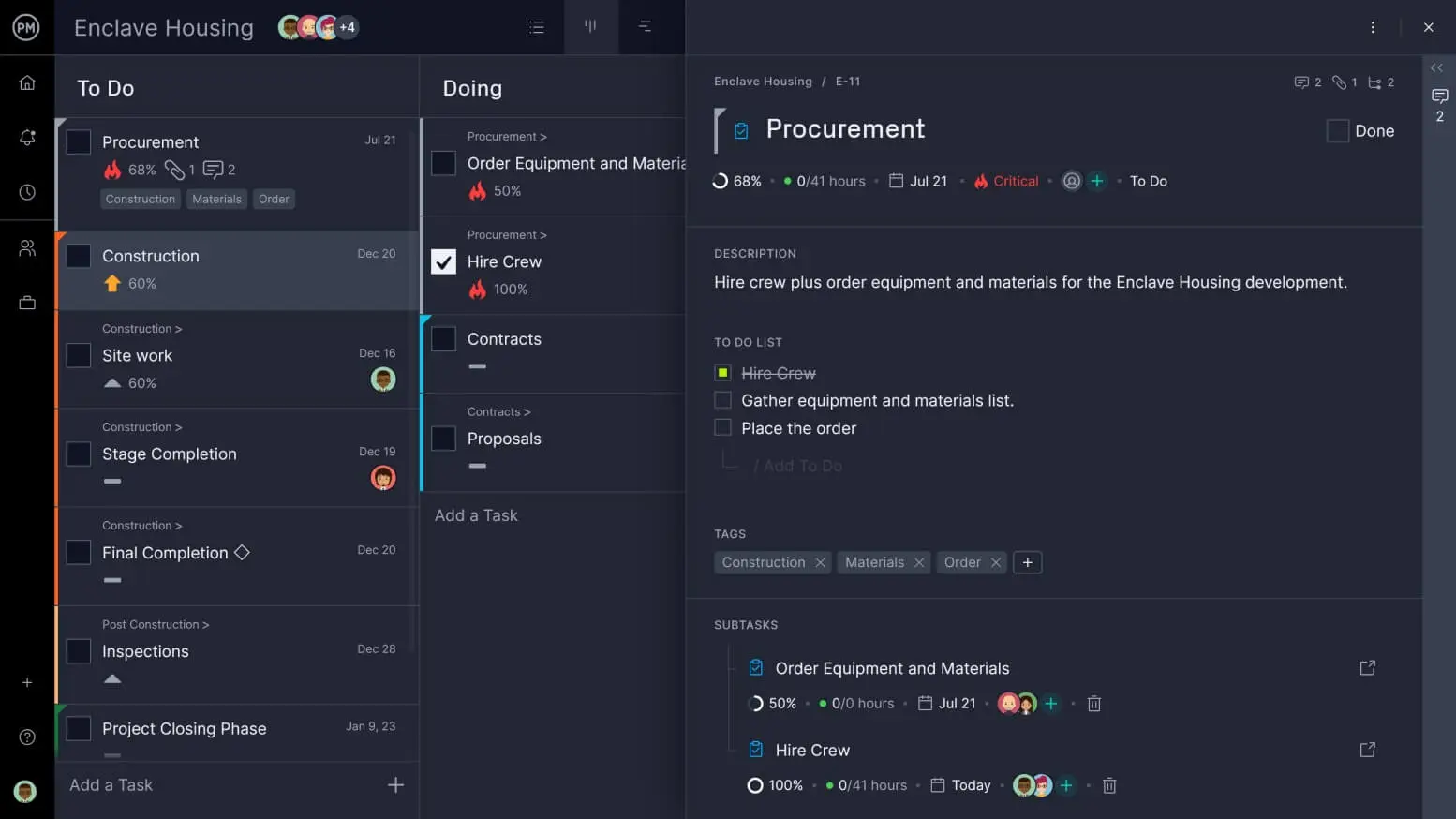
Track Labor Costs With Timesheets
Timesheets are a great cost-tracking tool for any team leader. Simply assign tasks to your team members on the Gantt chart or kanban board and ProjectManager will automatically add those hours to timesheets you can print or share with unlimited file storage.
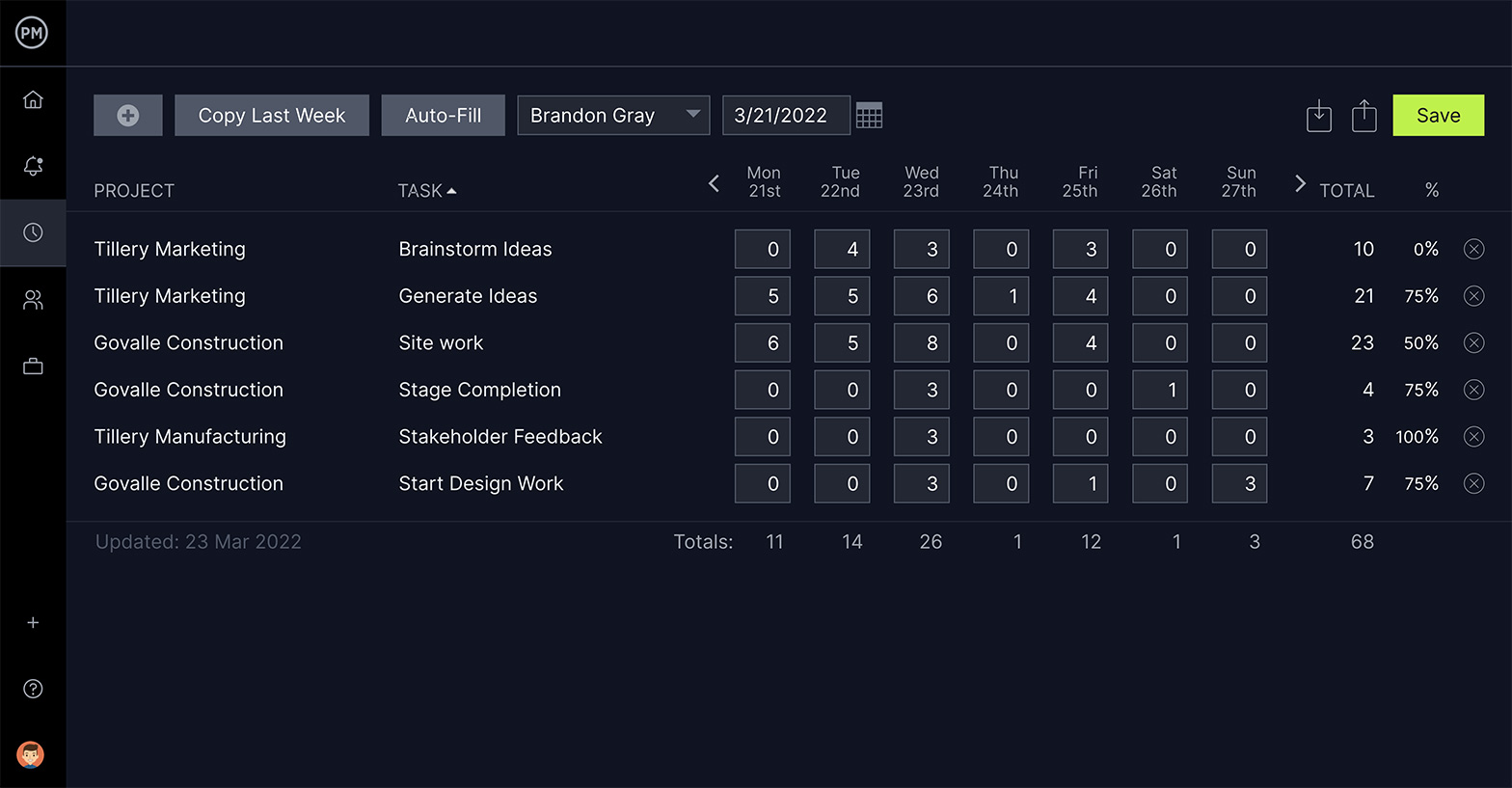
Manage Your Team’s Workload
Use the workload chart to see who’s working on what and who might be over or under-allocated. This chart helps you quickly understand what your resource utilization is, so you can balance your team’s workload.
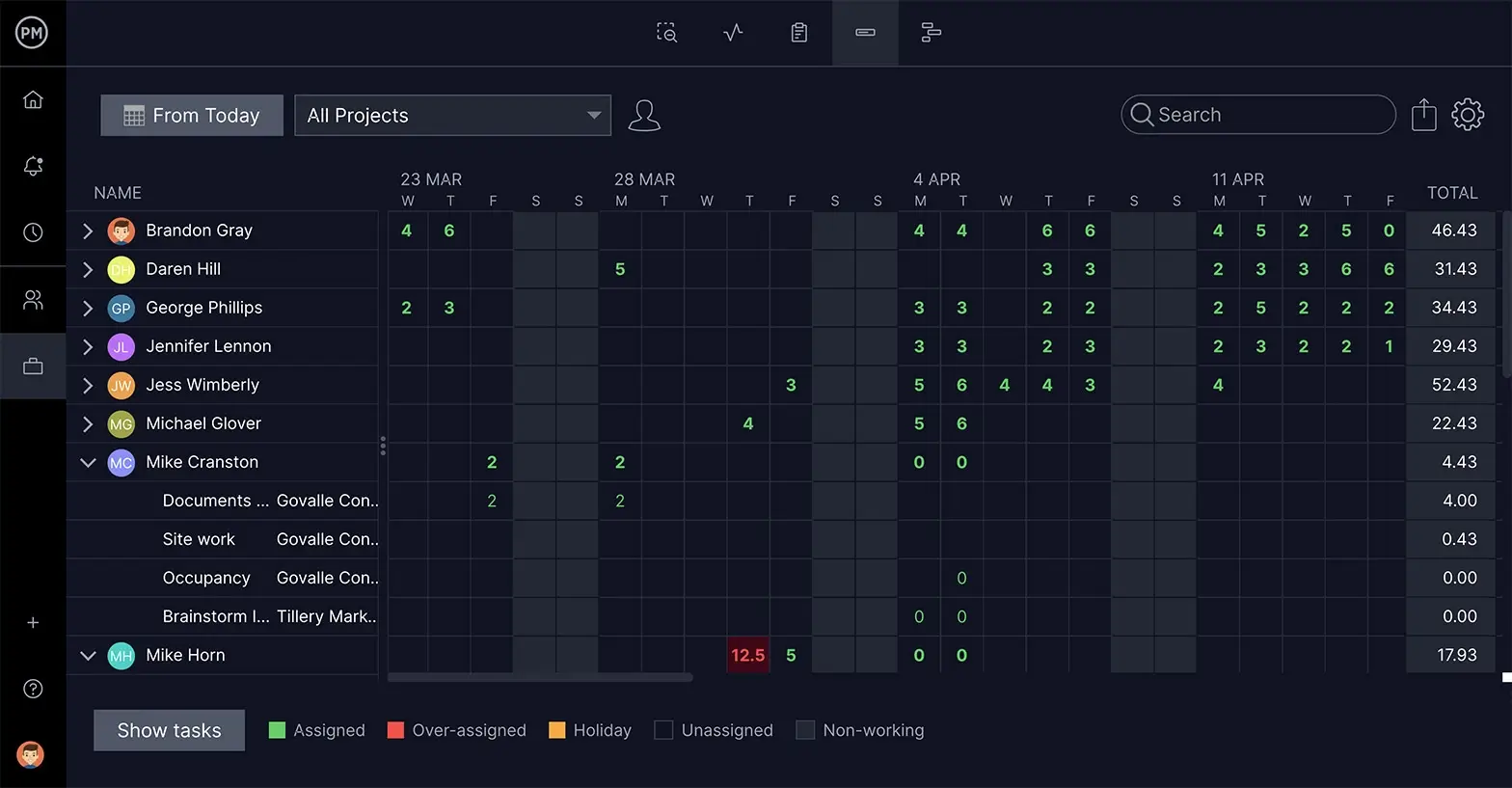
Related Operations Management Content
- Operational Planning: How to Make an Operations Plan
- Operational Strategy: A Quick Guide
- Operations Management: Key Functions, Roles and Skills
- Operational Efficiency: A Quick Guide
Operational excellence requires a plan that is then tracked and measured against its progress. It’s a project, and like any project, it needs the right tool. ProjectManager is online project management software with features that allow managers to schedule with online Gantt charts and track changes with a real-time dashboard. See how it can help your organization achieve operational excellence by taking this free 30-day trial.

